


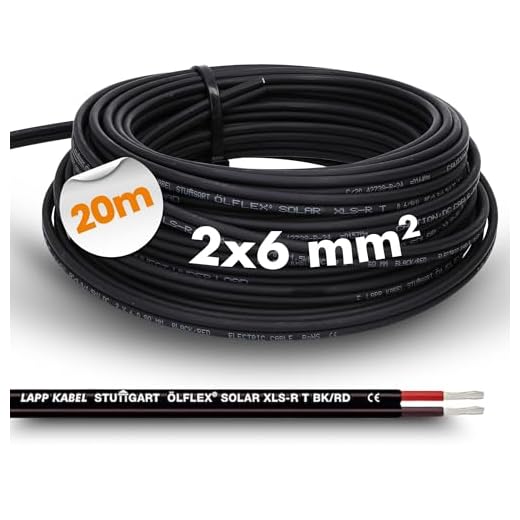
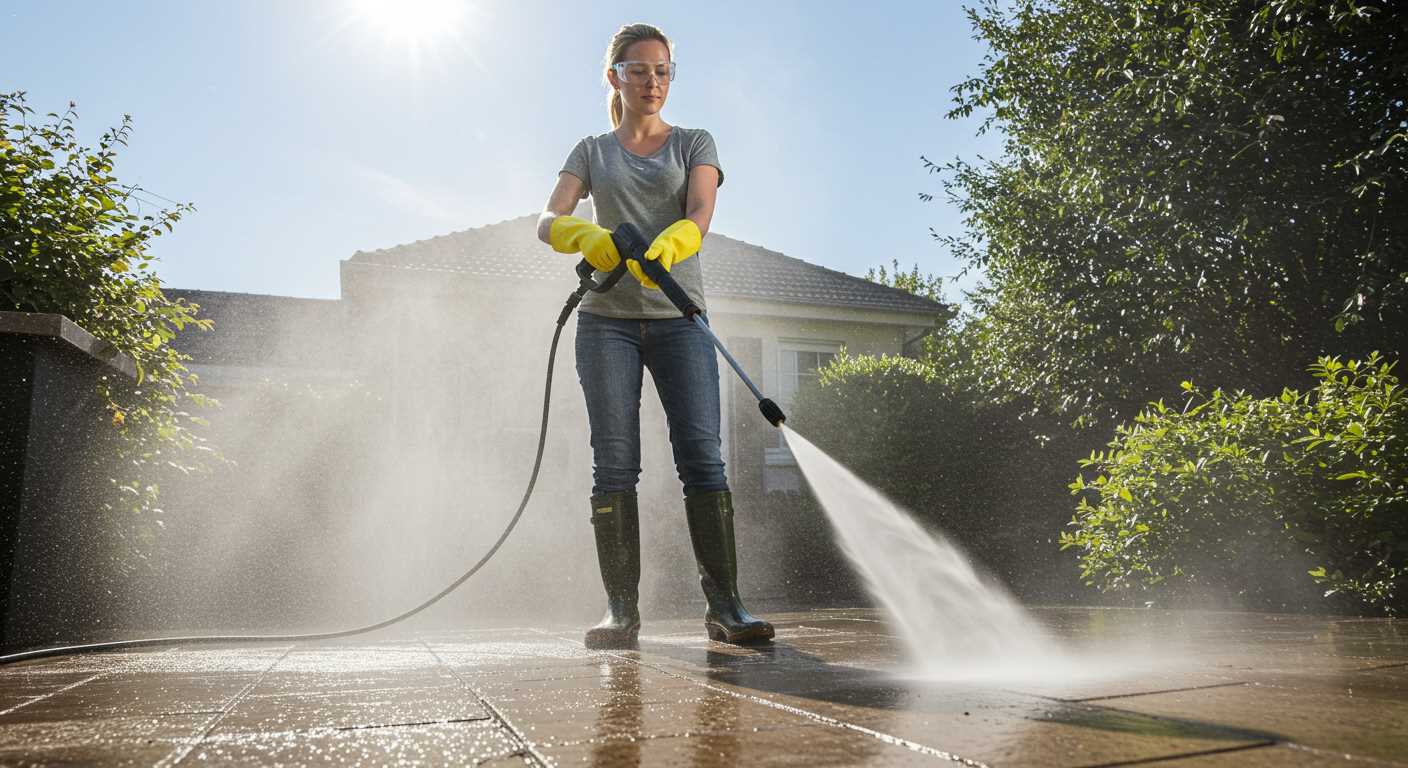
Using an inverter to power a high-pressure cleaning device is feasible, but certain criteria must be met for optimal performance. First, check the wattage requirements of the machine. Many models demand a significant amount of power, often exceeding 2000 watts. Select an inverter that can handle at least 3000 watts to ensure it can manage both the starting surge and continuous operation.
My experience with various cleaning machines taught me that starting amperage can spike when the motor kicks in, sometimes reaching two to three times the running wattage. One project involved a stubborn stain on a driveway, where I noticed my 2500-watt unit required an inverter rated at 4000 watts for effective use without interruptions. This combination allowed me to tackle tough tasks without the unit stalling.
Additionally, consider the type of inverter. Pure sine wave inverters are recommended for sensitive electronics, providing a stable power supply that mimics grid electricity. During a demonstration at a trade show, I witnessed first-hand how cheaper modified sine wave inverters struggled with the motor’s demands, leading to inconsistent performance. Investing in quality equipment pays off in the long run.
Lastly, ensure the inverter’s battery capacity aligns with the cleaning device’s runtime. A larger battery can provide extended use, but keep in mind recharge times and the inverter’s efficiency. On one occasion, I underestimated the power needed for a large outdoor job, and my setup struggled to maintain pressure, resulting in a longer than anticipated completion time. Planning ahead can save valuable time and effort.
Utilising an Inverter for High-Pressure Equipment
Utilisation of a power inverter to operate high-pressure cleaning machines is feasible, but it requires careful selection of the device. Many models demand a considerable amount of wattage, especially during startup. Ensure the inverter’s output is at least 20-30% higher than the unit’s rated wattage for reliable performance.
Key Specifications
Standard electric cleaners typically range from 1200 to 2000 watts, with some commercial-grade machines exceeding 3000 watts. Check the starting wattage, as it may be significantly higher than the running wattage. For instance, a unit rated at 1500 watts might need up to 3000 watts to initiate. Always verify the inverter’s continuous and peak wattage ratings.
Practical Experience
During my tenure in the cleaning equipment sector, I encountered various scenarios where users attempted to utilise inverters with their machines. One customer had a 2000-watt model but paired it with a 1500-watt inverter. The result was frequent shutdowns due to inadequate power supply. Upgrading to a 3000-watt inverter resolved the issue, allowing seamless operation. Additionally, using pure sine wave inverters is crucial for sensitive electronics found in some higher-end models, ensuring longevity and preventing damage.
In essence, while operating high-pressure cleaning machinery via an inverter can be achieved, meticulous attention to specifications and requirements is indispensable for success.
Understanding Pressure Washer Power Requirements
When considering the compatibility of a high-pressure cleaning device with a power source, focus on the wattage and starting amperage. These machines often require a significant amount of power, especially during startup, which can be several times greater than their running wattage. For instance, a typical model may have a running wattage of around 1500 to 2000 watts but could need 3000 watts or more to start.
Check the specifications of both the washer and the power supply. Look for continuous and peak wattage ratings. An inverter should ideally provide at least 20-30% more power than the peak requirement to ensure smooth operation. If the inverter can only handle 2500 watts, it might struggle with anything needing 3000 watts on startup.
Consider the type of motor as well. Induction motors, often found in these devices, are more efficient but typically demand higher starting current compared to universal motors. If using a generator or battery system, ensure it has the right capacity and surge rating to accommodate the demands of the equipment.
I’ve encountered situations where users underestimated their power needs, leading to frustrating interruptions. For instance, a friend of mine attempted to operate a 2000-watt cleaner with a 1500-watt inverter. The result was frequent shutdowns and a lacklustre cleaning experience. This taught me the importance of matching equipment specifications for optimal performance.
Lastly, don’t forget about the quality of the inverter. Pure sine wave inverters are generally more suitable for sensitive electronics found in many modern machines, while modified sine wave inverters may cause issues. Always opt for a reliable inverter that meets or exceeds your device’s requirements for a hassle-free job.
Choosing the Right Inverter for Your Pressure Washer
To ensure seamless operation of your high-powered cleaning device, select an inverter with a continuous output rating that exceeds the wattage requirement of your equipment. For example, if your unit demands 2000 watts, opt for an inverter with a 2500-watt capacity. This extra margin will accommodate initial surge power, which often spikes during startup.
Understanding Inverter Types
Two main types of inverters exist: pure sine wave and modified sine wave. Pure sine wave inverters deliver a cleaner, more stable current, making them the smarter choice for sensitive devices and motors. I recall a time when I used a modified sine wave model, and it caused my machine to struggle and overheat. Switching to a pure sine wave inverter resolved the issue, providing smooth operation and prolonging the lifespan of my equipment.
Portability and Features
Consider portability and features that suit your needs. If frequent relocation is on your agenda, a lightweight, compact inverter with built-in handles can be invaluable. Look for models with multiple AC outlets and USB ports for versatility. I once had a unit that offered both AC and DC outputs, which proved handy for charging batteries while on the move. Always check the inverter’s runtime capabilities, especially if longer sessions are part of your routine.
Calculating Starting and Running Watts for Compatibility
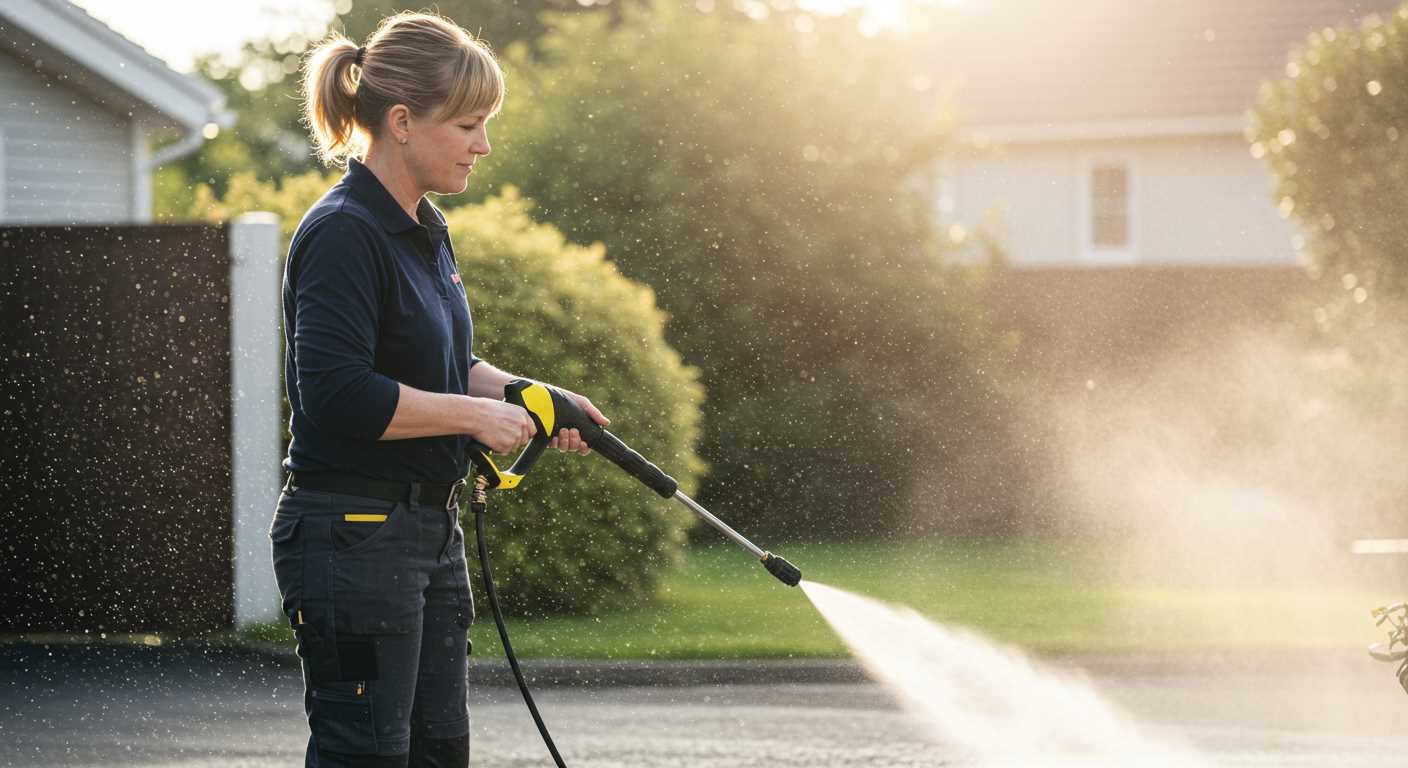
To ensure your equipment operates seamlessly with a power source, calculating both starting and running watts is crucial. Starting watts, or surge watts, represent the initial power needed to activate the motor, while running watts, or continuous watts, denote the power required for ongoing operation.
For example, a typical electric cleaning device may require around 1200 watts to run but could demand up to 3000 watts at startup. Failing to account for this difference can result in inadequate performance or even damage to the power supply. Here’s a straightforward method for determining these values:
| Type of Equipment | Starting Watts | Running Watts |
|---|---|---|
| Electric Cleaner | 3000 W | 1200 W |
| Small Electric Motor | 1500 W | 600 W |
| Air Compressor | 4000 W | 1500 W |
When selecting a power supply, always choose one that can handle the peak demand. If your device has a starting wattage of 3000 watts, ensure the power source can provide at least that amount temporarily. A good rule of thumb is to look for a unit that offers at least 20% more capacity than the peak requirement. This buffer accounts for any fluctuations in power and helps maintain efficiency.
In my experience, I once encountered a situation where a client attempted to use a smaller power source for a 2000-watt motor. They ignored the starting wattage, which was 4000 watts. The motor struggled to start, resulting in frequent trips of the circuit breaker. After switching to a properly rated power supply, everything functioned without issue.
Always check the specifications of your equipment to obtain accurate wattage figures. Manufacturers typically provide this information in the user manual or on the device’s label. If still uncertain, a watt meter can be a practical tool for measuring actual usage.
Types of Inverters: Modified Sine Wave vs Pure Sine Wave
When selecting an inverter for specific equipment, understanding the differences between modified sine wave and pure sine wave inverters is critical for optimal performance.
Modified sine wave inverters are more affordable and widely available. They produce a waveform that approximates a sine wave but with noticeable steps. This can be suitable for simple devices like lights or small electronics. However, when it comes to sensitive machinery, such as electric motors found in cleaning devices, this type may cause excessive heat, leading to efficiency losses and potential damage over time.
Pure sine wave inverters, on the other hand, deliver a smooth, continuous waveform that mimics the power supplied by utility grids. This type is ideal for high-performance tools and equipment. Using a pure sine wave inverter with electric motors ensures they operate smoothly, reducing wear and extending lifespan. Here are some examples of where each type is best suited:
- Modified Sine Wave Inverters:
- Basic lighting systems
- Simple chargers and small appliances
- Non-sensitive electronics
- Pure Sine Wave Inverters:
- High-performance cleaning devices
- Computers and sensitive electronics
- Medical equipment
In my experience, using a pure sine wave inverter has always proven to be the safer choice for robust machinery. I recall a scenario where a client opted for a modified sine wave inverter for their high-performance cleaner. Within weeks, the motor began to overheat, resulting in costly repairs. Switching to a pure sine wave inverter resolved these issues, emphasising the importance of selecting the right type for the job.
Investing in a quality pure sine wave inverter can prevent unnecessary headaches and expenses, particularly for powerful cleaning tools that demand precise power delivery. Always consider the specifications of your equipment and the type of inverter to ensure compatibility and efficiency.
Safety Considerations When Using Inverters
Always ensure proper ventilation when operating inverters to prevent overheating. Overheating can lead to system failure or even fire hazards. I recall a situation where I neglected this and the inverter shut down unexpectedly due to high temperatures. It’s a lesson learned: keep the area around your inverter clear and allow for adequate airflow.
Utilise high-quality extension cords rated for the specific loads you’re handling. I’ve seen cheaper cords melt under pressure, causing damage to equipment and creating safety risks. Stick to cords that match or exceed the wattage requirements of your devices.
When connecting devices, follow the manufacturer’s guidelines for power specifications. I once connected a high-demand unit without checking the wattage, resulting in a blown fuse. Always double-check compatibility to avoid potential damage.
Grounding your inverter is paramount. Improper grounding can lead to electric shock or damage to your equipment. I remember connecting my gear without grounding once, and it resulted in a frustrating experience–don’t make the same mistake.
Keep your inverter dry. Water and electricity do not mix. I’ve seen too many instances where moisture led to short circuits. If you’re using your setup outdoors, ensure it is protected from rain and splashes.
Regularly inspect your equipment for wear and tear. Cables can fray, and connections can loosen over time. A quick check before use can save you a lot of trouble. I’ve had cords fail in the middle of a job, and it’s never a pleasant situation.
Consider investing in a surge protector. Sudden spikes in power can damage sensitive electronics. I learned this the hard way when my inverter faced a power surge that fried a component of my equipment. A surge protector adds a layer of security.
Lastly, always have a fire extinguisher nearby. Safety gear should never be an afterthought. I’ve been in situations where quick access to a fire extinguisher made all the difference. Better safe than sorry.
For those looking for a robust solution, check out a pressure washer for semi truck to handle heavy-duty cleaning tasks with efficiency and safety in mind.
Common Issues When Operating High-Pressure Cleaners with Inverters
Using a high-pressure cleaner with an inverter can lead to specific challenges that often catch users off guard. Here are some frequent problems encountered in this scenario:
- Insufficient Power Supply: Many individuals underestimate the power requirements of a high-pressure cleaner. If the inverter doesn’t provide adequate wattage, the equipment may fail to start or operate properly.
- Voltage Fluctuations: Inverters can produce fluctuating voltage levels, particularly under high loads. This inconsistency can cause the motor to stall or even damage sensitive internal components.
- Overheating: Continuous operation of a high-pressure unit can lead to overheating in the inverter. Most inverters have safety features, but prolonged use beyond their capacity can trigger shutdowns.
- Noise Levels: Inverters, especially modified sine wave types, can create additional noise. While this isn’t a functional issue, it can be bothersome in quieter environments.
- Compatibility Issues: Not all high-pressure cleaners are designed for inverter use. Some models may have specific requirements that make them incompatible with certain inverter types.
- Starting Surge Problems: High-pressure devices often require a significant starting surge. If the inverter cannot handle this surge, the machine may not start at all.
To tackle these challenges effectively, always check the specifications of both the cleaning device and the power supply unit. Maintaining awareness of potential issues can save a lot of frustration and ensure a smoother operation.
Best Practices for Connecting a Pressure Washer to an Inverter
Always match the inverter’s output with the specifications of the cleaning equipment. I recall a time when I connected a high-pressure cleaning unit to an inverter without checking the wattage requirements thoroughly. The inverter struggled to provide consistent power, leading to interruptions during operation. This resulted in a less-than-satisfactory cleaning performance.
Before making any connections, ensure that the inverter has sufficient surge capacity. Many electric cleaning devices require a higher wattage to start than what they need during operation. I’ve encountered situations where clients underestimated the initial power draw, causing the inverter to trip. Always calculate the starting watts and ensure your inverter can handle that spike.
Utilise heavy-duty extension cords for longer distances. Thin or low-quality cords can cause voltage drops, impacting performance. I remember using a lightweight cord once, and it led to overheating issues. Opt for a minimum of 12-gauge wire for extended runs to maintain optimal voltage levels.
Verify that all connections are secure. Loose connections can lead to arcing, which not only affects performance but can also pose safety risks. During one of my field tests, a loose connection caused intermittent power loss, making the cleaning task take much longer than necessary.
Always monitor the inverter’s temperature during use. Overheating can lead to failure, and I’ve seen inverters shut down unexpectedly due to excessive heat. Make sure the inverter has adequate ventilation, especially during prolonged use.
Finally, keep the surroundings dry and free from moisture. Water and electricity do not mix well. I’ve experienced a scare when working in damp conditions without proper precautions. Ensuring that the inverter remains in a protected area can prevent potential hazards.
Alternative Power Solutions for Pressure Washers
When faced with the challenge of powering cleaning equipment in remote locations, exploring alternative energy sources can be rewarding. In my experience, solar generators have become increasingly popular among users seeking environmentally friendly options. These systems harness sunlight to produce electricity, making them an excellent choice for outdoor cleaning tasks.
Another option is using portable gasoline generators. I’ve found these to be particularly reliable for high-demand applications. They provide considerable power and can handle various appliances, including those with high starting wattage. However, noise and emissions should be factors to consider when selecting this route.
Battery packs are also gaining traction, especially lithium-ion models. They offer a clean, quiet solution for users needing mobility without sacrificing power. I’ve used these for smaller equipment and found them to work efficiently, but their capacity may limit the use of larger models.
Combining different energy sources can optimise performance. For instance, utilising a solar generator during the day and a gasoline generator at night can effectively extend your cleaning capabilities. This hybrid approach allows flexibility and ensures you have access to power whenever needed.
While experimenting with these alternatives, I discovered the importance of selecting compatible cleaning solutions. Using the best car wash soap to use with pressure washer can enhance cleaning efficiency and protect your equipment. It’s essential to pair power sources with appropriate accessories to achieve the best results.
Always remember to evaluate the specific requirements of your equipment against the capabilities of your power source. Each alternative has its pros and cons, but with careful consideration, you can find a solution that meets your needs effectively.

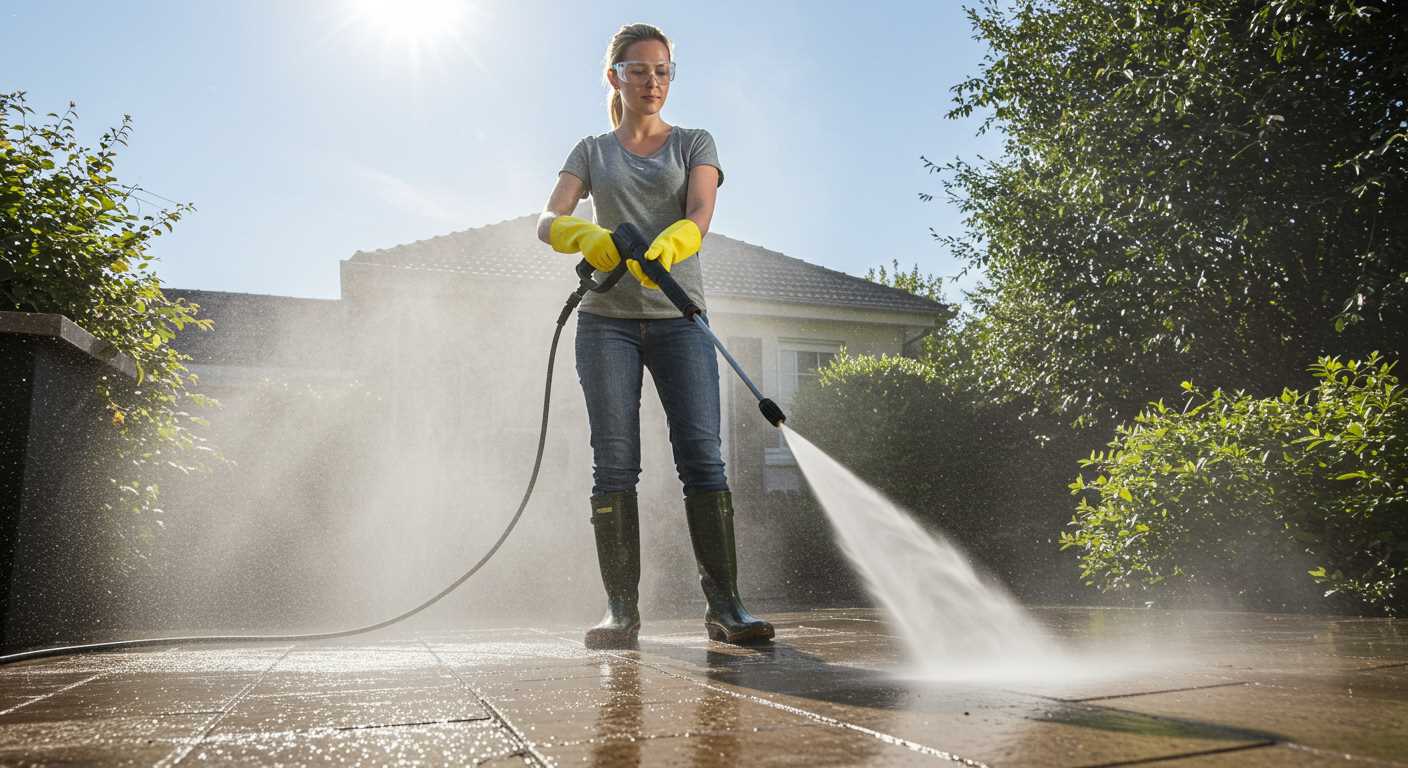


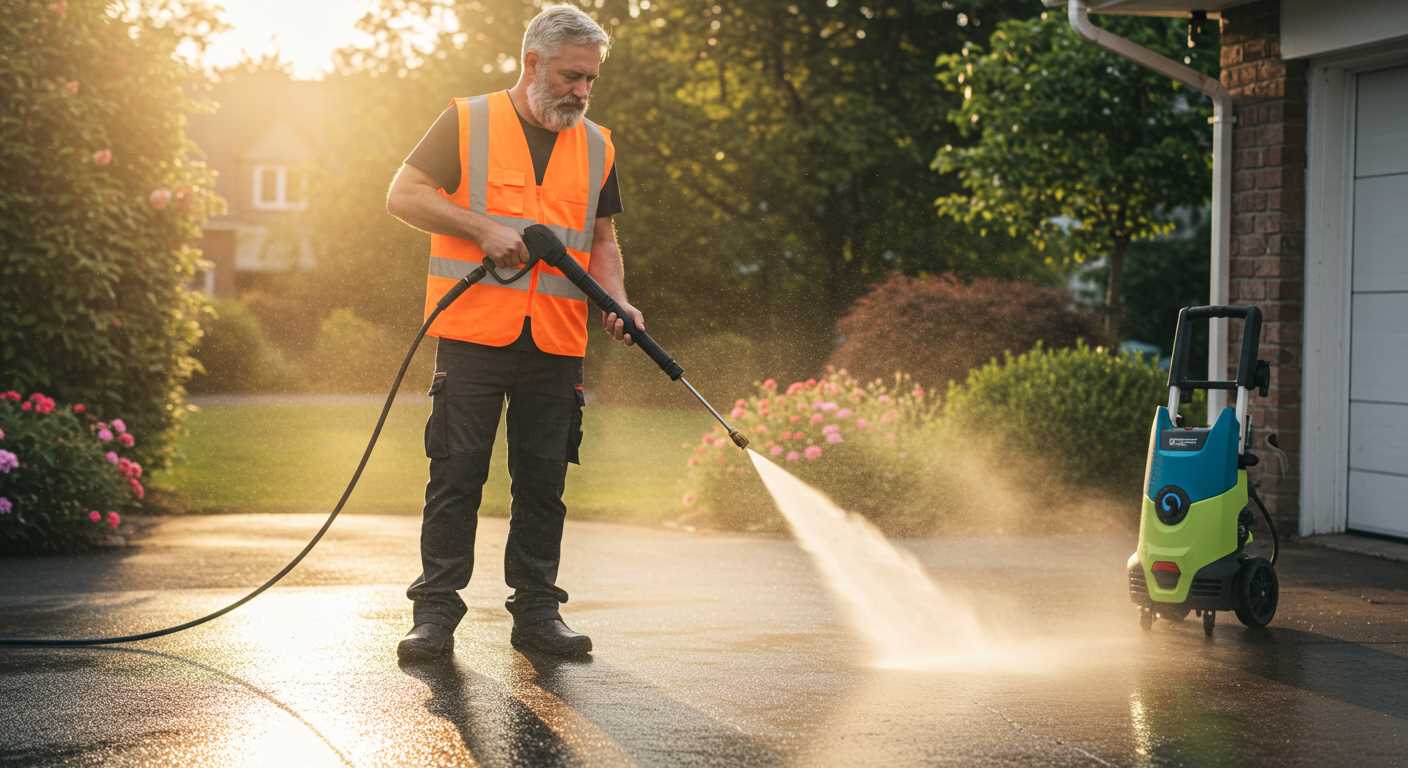

.jpg)


